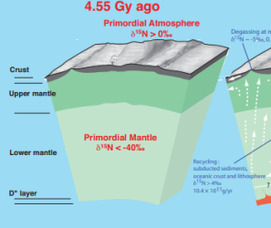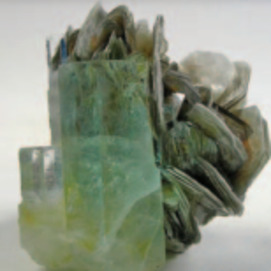Nitrogen Isotopes and Mantle Geodynamics: The Emergence of Life and the Atmosphere– Crust–Mantle Connection
Nitrogen shows unique features among the volatile elements. To be cycled, atmospheric di-nitrogen (N2) needs to be reduced, which is efficiently done by bacterial processes. Crustal uptake of nitrogen and its eventual recycling into the mantle is thus primarily mediated by the biosphere. There is also a marked isotopic contrast between the mantle (15N depleted) and the Earth’s surface (15N enriched). Although the cause of such disequilibrium is not fully understood, it provides insights into mantle–surface interactions over geological time, including recycling of surface sediments into the deep mantle.




